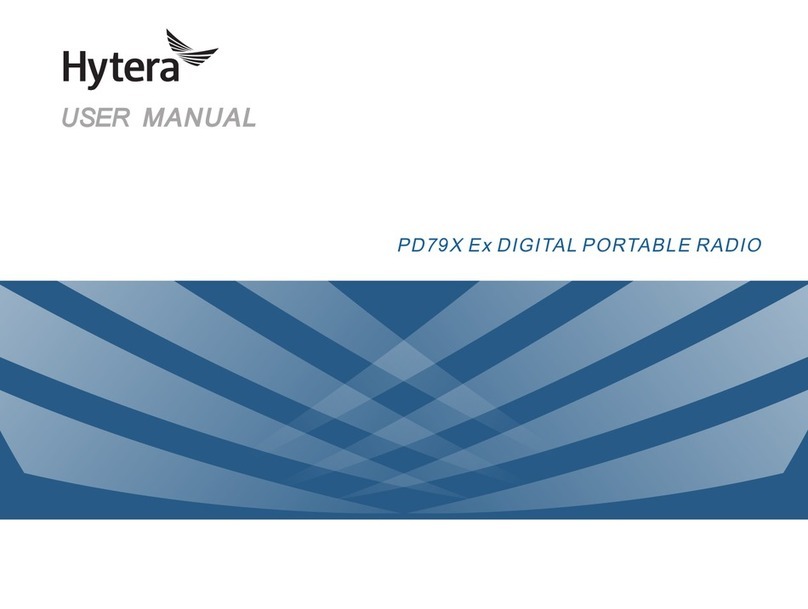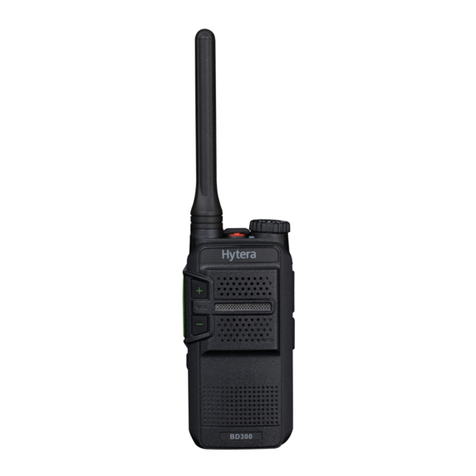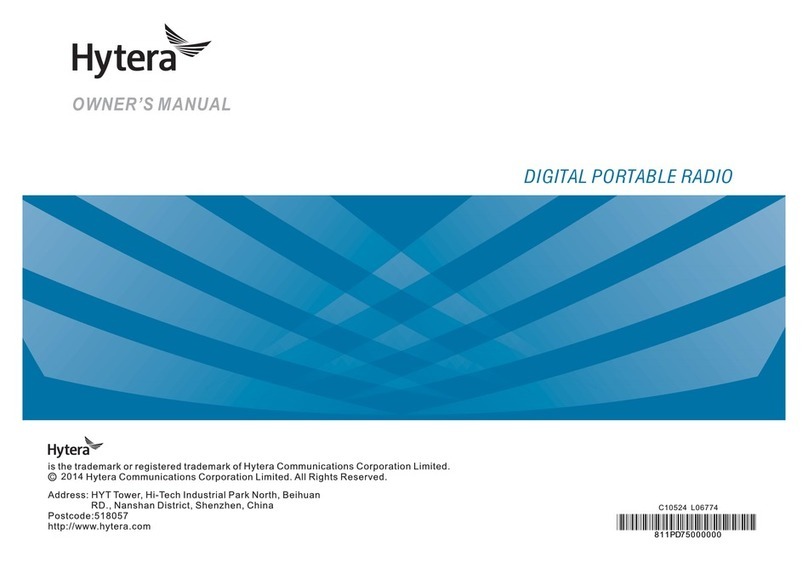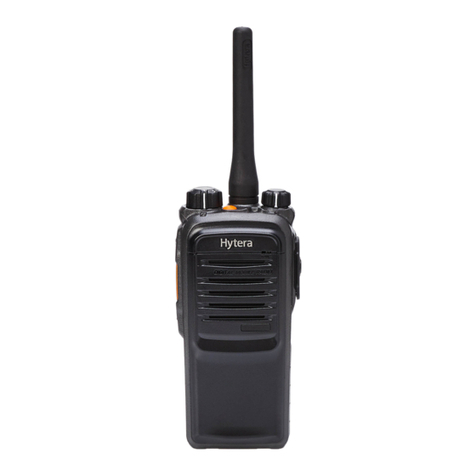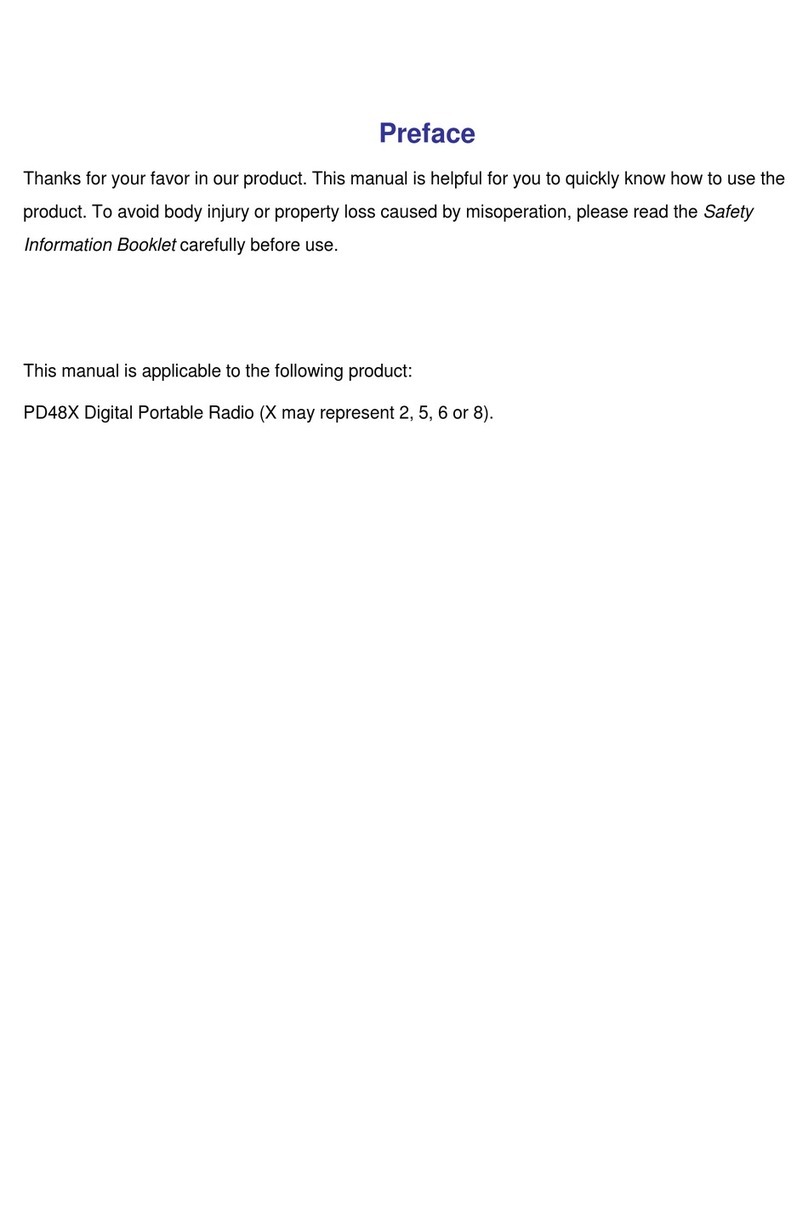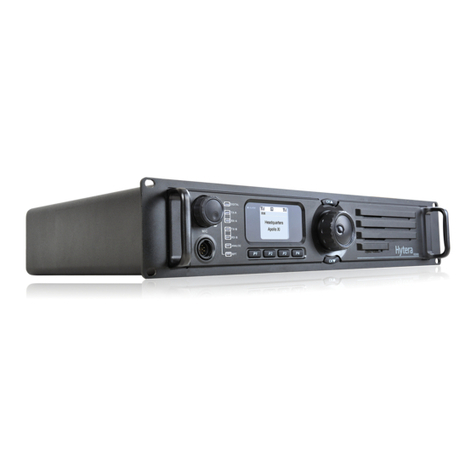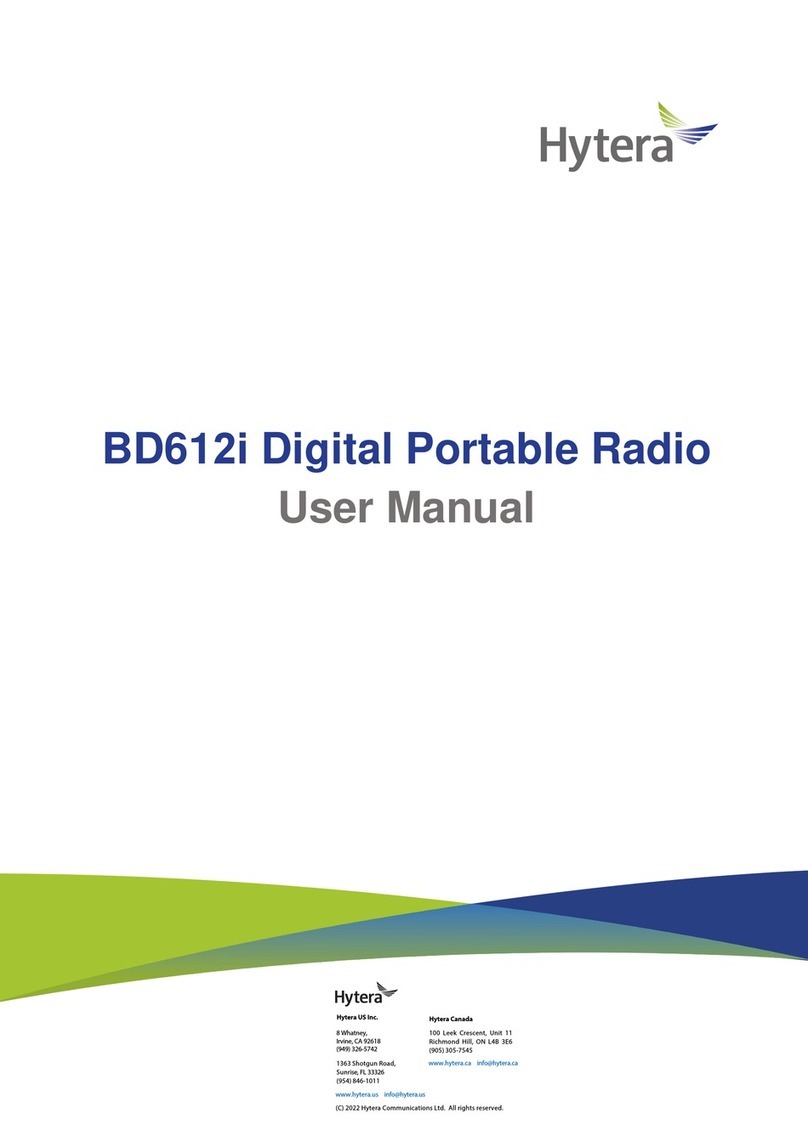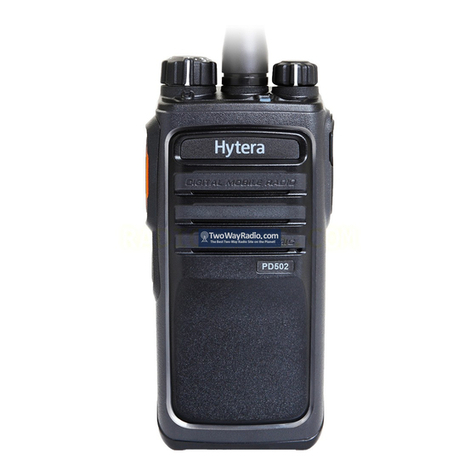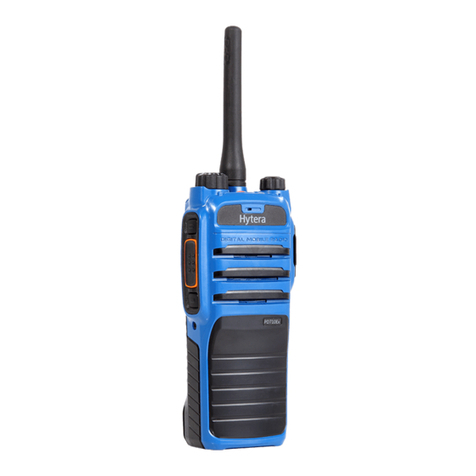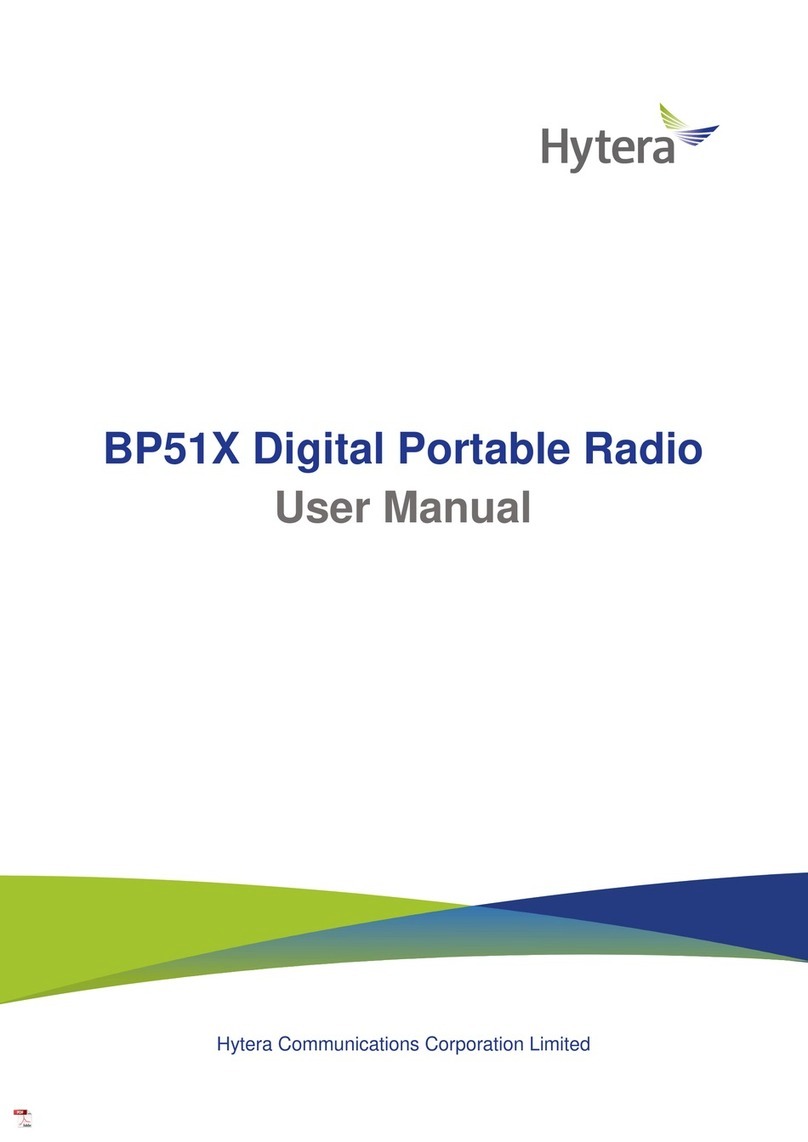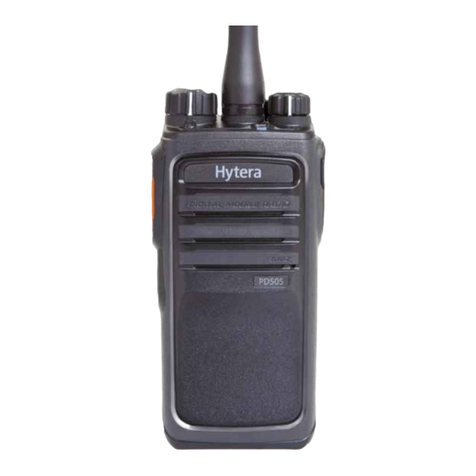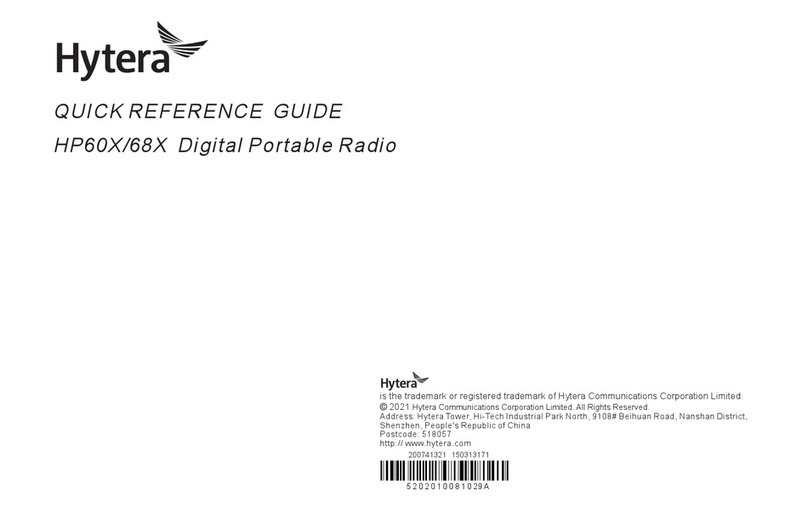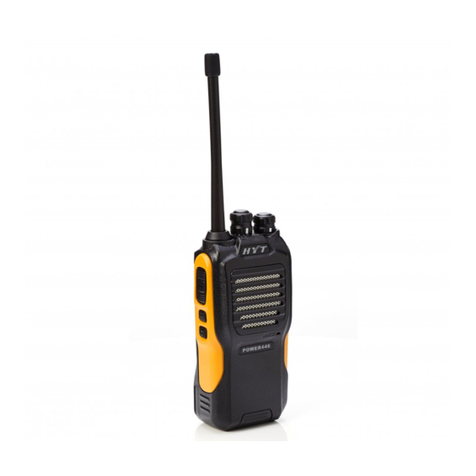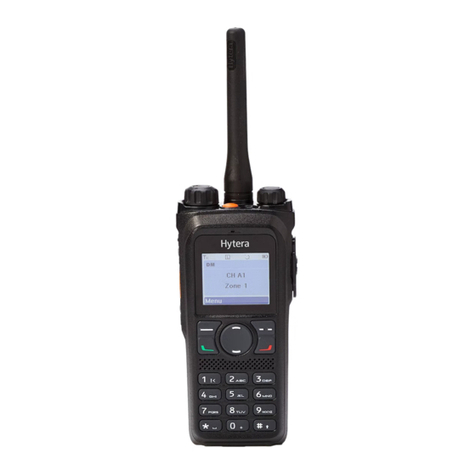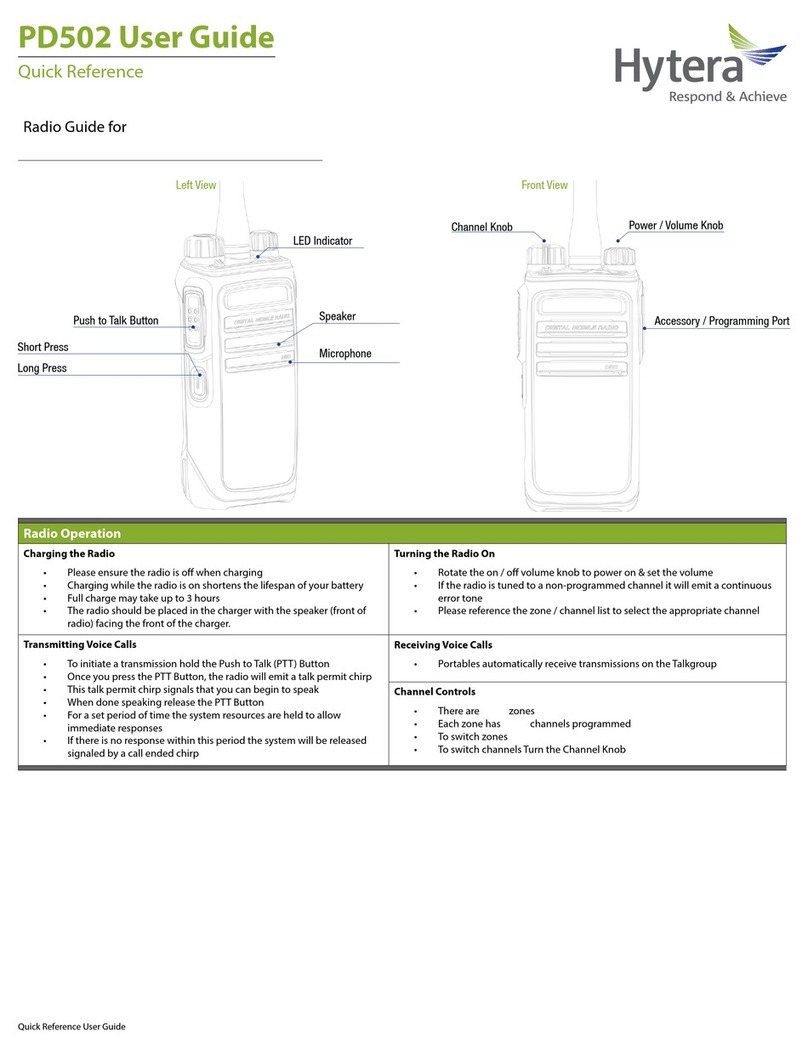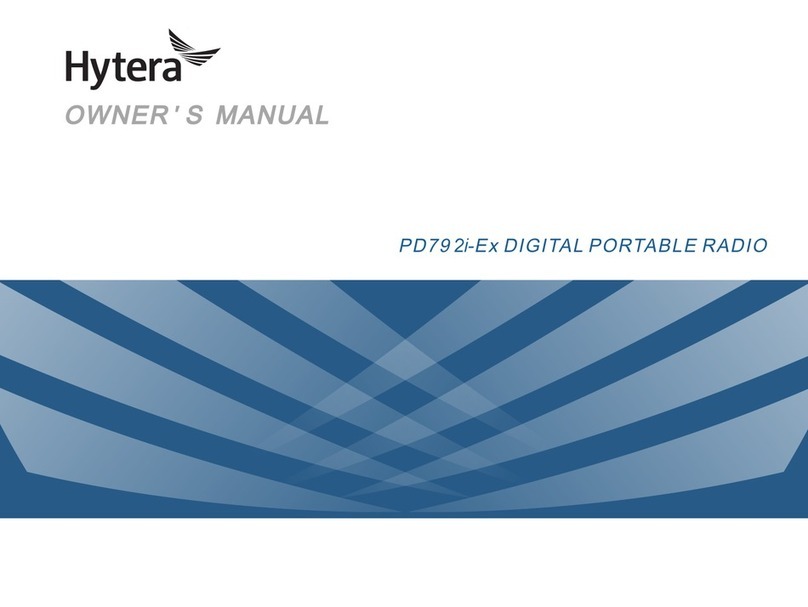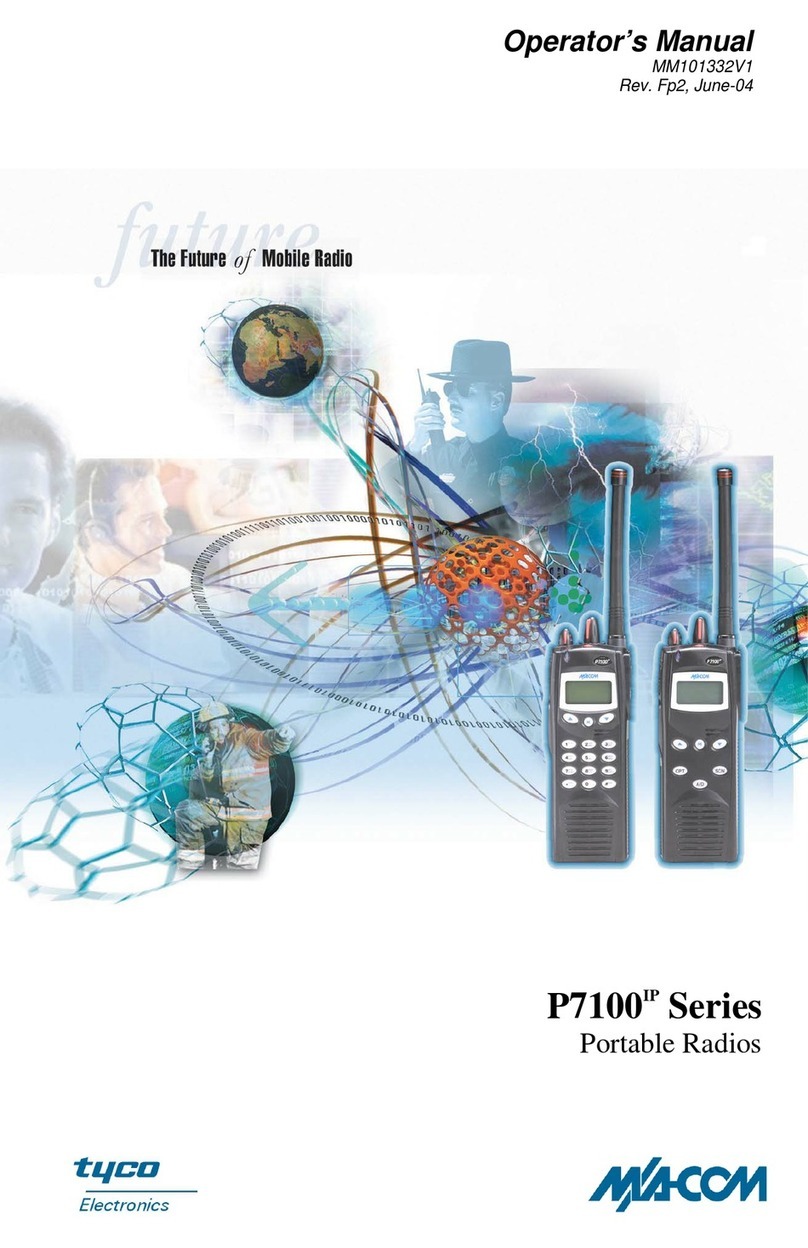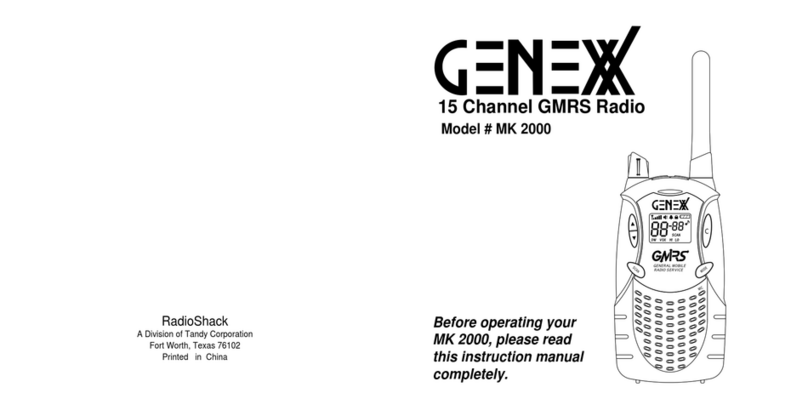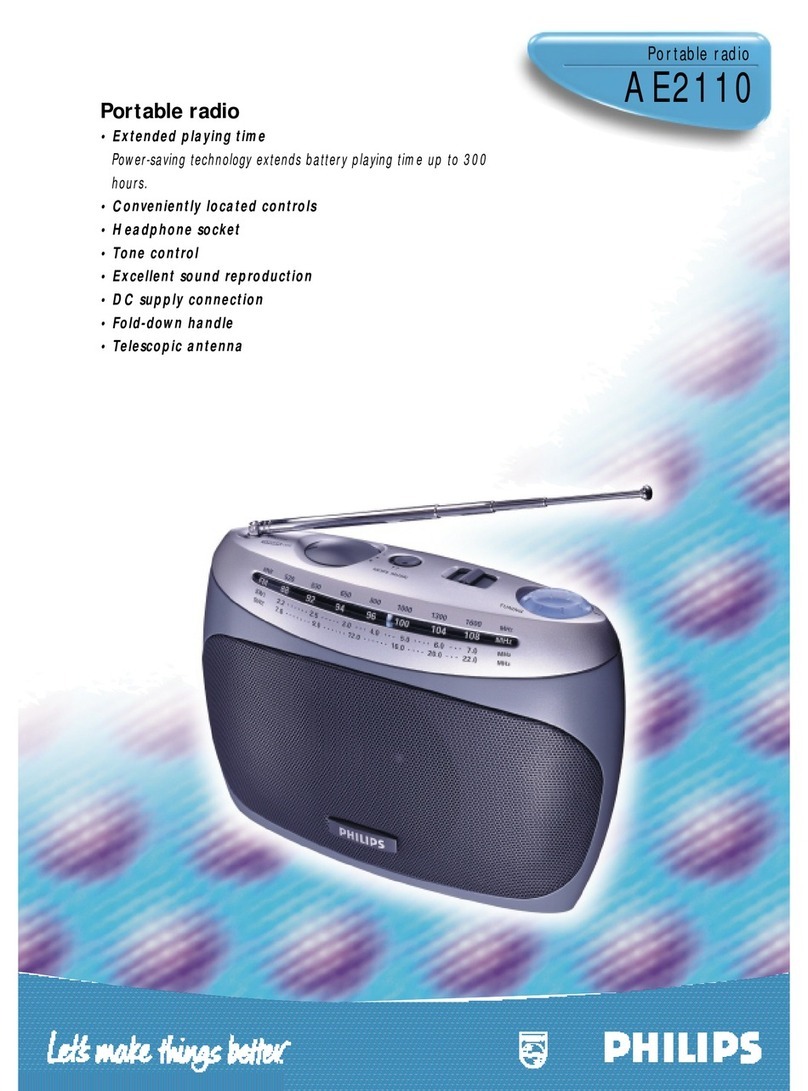
Safety Information
3
2. Please use an earpiece with good waterproof
performance. In addition, the earpiece must go well
with the radio.
3. To avoid serious damage due to entry of water into
the main unit, DO NOT damage or tear down the
label covered on the test hole.
4. To clean the radio, turn it off and then rinse it
(according to IP66 standard). DO NOT immerse it
in water. Radio rinsing must be completed within
2~3 minutes. If the radio accidentally drops into
water, please take it out and turn it off immediately.
Then hold the radio with the speaker towards your
palm and slap the radio to make the water ow out.
Finally wipe and dry it.
5. DO NOT clean the radio under circumstances
in which waterproofing failure may result. For
example, if there is any damage or crack on the
main unit/battery, or if the main unit/battery is once
dropped or shocked, DO NOT clean the radio.
6. The radio is compliant with IP66 standard. However,
once the radio is accidentally dropped or shocked,
waterproof performance cannot be guaranteed.
7. DO NOT immerse the battery in water. If the battery
(especially the charging piece) gets wet, please dry
it before placing it into the main unit or the charger.
8. To avoid serious damage due to entry of water into
the battery, DO NOT damage or tear down the label
on the battery back (especially the label covered on
the air hole).
9. To avoid effect on life cycle due to entry of dust into
the radio, please use a carrying case.
1. If the main unit or the battery gets wet, DO NOT
disassemble or charge it immediately. Otherwise,
short circuit, corrosion or even danger may result.
2.Make sure dry battery and antenna are securely
xed to the main unit before operation. Otherwise,
short circuit or even danger may result.
Warning
